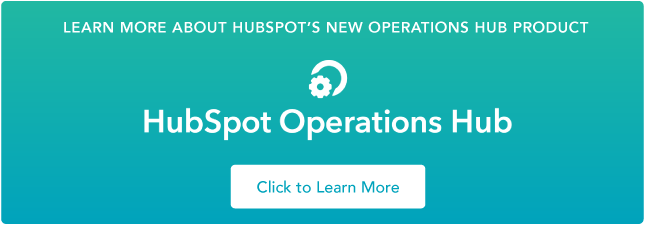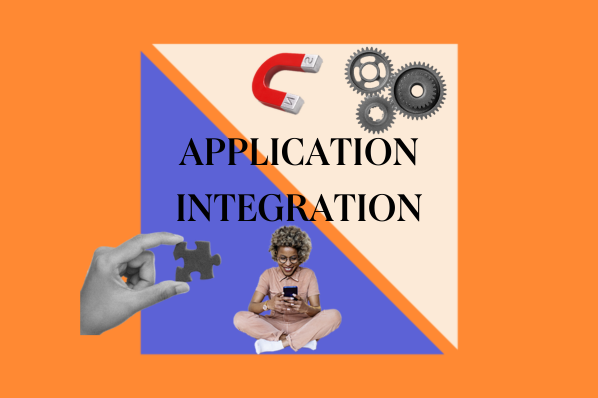Table of Contents
- What is software integration?
- How to Implement Software Integrations
- Native Software Integrations vs. iPaaS
- Software Integration Examples
- Best Practices for Integration Software
- Software Integration Overview
What is software integration?
Integration refers to the process of combining two pieces of software to join isolated data together.

Integrating disjointed software solutions is one of the most common challenges companies are currently facing. Most applications are not connected with each other, resulting in little islands of data. This results in data slipping through the cracks, insights not being shared between teams, and things just getting done slower than they would be if all of your data was connected together.
To sync these data islands together, you’ll need to answer the questions in the following section.
How to Implement Software Integrations
Before you start syncing data via software integrations, you consider the following questions:
1. What type of software will you integrate?
Though big companies often create in-house software, they are increasingly adopting Software as a Service (SaaS) solutions. These tools enable them to manage particular business processes without having to support them internally.
Smaller businesses usually go directly for SaaS, preferring cloud-based applications that can scale with their business.
Regardless of the size of your business, if you are working with in-house software and need to integrate, you should consider hiring a team of engineers to help out with the necessary software architecture.
Does that sound too complex or out of budget? Don’t worry, there are pre-built enterprise integration software you can consider, like the ones available in HubSpot's App Marketplace.
Cloud-based business applications (those SaaS solutions we talked about) make life a bit easier. Most of them make their Application Programming Interface (API) public, which expands your possibilities for integration.
2. Which integration software do you need?
First, let’s talk about APIs ...
Imagine your applications as cities. The API of each app is a series of directions to access that city. Some applications use APIs to create a direct highway between cities. This creates different types of integration software: native, custom, and third-party integrations.
Native Software Integrations
Native integrations are created by engineers behind applications to shift their own data to another app. This is great because you can create an integration within the environment of the app you are using. You don’t have to open a new software or even a new tab in your browser to get started.
The problem is that building direct highways takes a lot of time and effort, and most software providers only offer native integrations with a few apps. Unless you have a synchronization solution like Operations Hub, for all the other apps that you use, you'll need an Integration Platforms as a Service (iPaaS).
Integration Platforms as a Service
iPaaS are fully dedicated to finding the best way to connect disparate software. They are basically the glue that keeps your entire software stack together.
When there are multiple tools inside a company, an iPaaS becomes an excellent solution. Teams working with different databases are rarely aligned toward the same goal. So, the iPaaS takes on the task of making customer data consistent for everyone who has access to it.
If your business works with several apps, you are probably already searching for an iPaaS. But before you finalize your decision, you should consider if you need a one-way or two-way integration.
Most iPaaS offer a one-way integration. That means it pushes data from app A to app B, like Zapier and Bardeen.ai do. If you need a two-way integration to keep different databases in sync, it's best to go for a built-in solution. Whenever you update something in either one of the apps, you’ll see that change available in the other one.
3. Which type of data needs integration?
When we talk about data, we can be referring to numbers, people, companies, products ... you name it! To set up an integration, you need to identify which part of your two or more databases make sense to combine.
Since data comes in any shape or form, each one of your applications will categorize it using its own terms. For instance, your CRM has a database with information about the "contacts" and "companies" you are working with. On the other hand, your accountancy app has a database full of "clients," "banking," and "expenses."
You can't mix apples with oranges. But that doesn't mean that different applications can't complement each other. Identifying similar data in each application gives you a complete view of what your integration should be like.
Here's a visualization showing how data from different sources (Salesforce, Marketo, Float) can be synced together to create a complete view of a company's data.
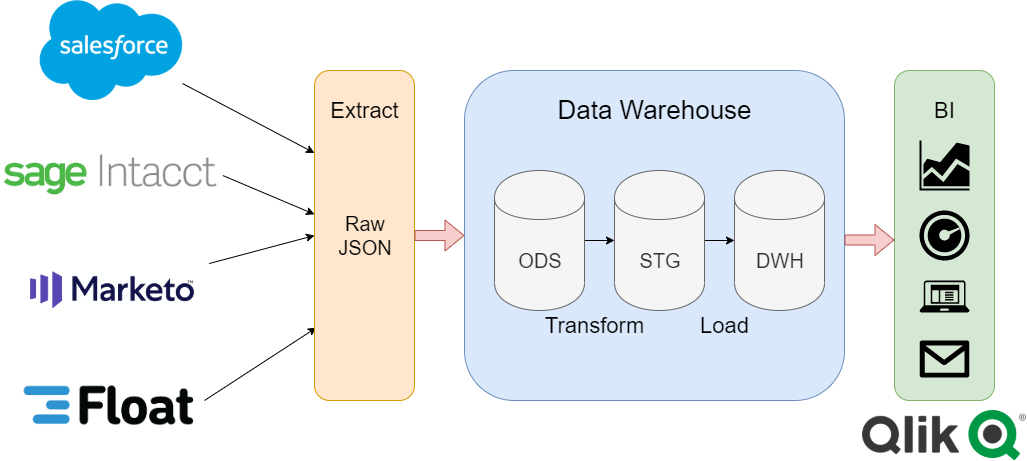
Let’s use the example of contact data. If you store information about a person called "Jane Doe" in your CRM’s contact list, it's likely that you are talking about the same Mrs. Doe categorized as a client in your accountancy app. We've identified the same element in the two apps: it's a customer! Why not use a software integration to enrich Jane’s info in both databases and have it automatically in sync?
You could see in both apps Jane’s latest contact information, know how much she spends with you, who manages her account, and much more. If you add other apps to the integration, such as your customer support tool or your lead generation app, the result would be a 360-degree view of your customer.
For more examples of software integration at work, read on to the next section.
Software Integration Examples
Here are a few real-life examples of how you can integrate different software at your business.
1. Sync contacts between databases.
You might have information on contacts stored in different databases. It's good to have this data synced, so you can pull up all of the information you need on a client in a timely manner.
A great example of this is an integration setup between HubSpot and Salesforce. You can sync all of your Salesforce contacts into HubSpot (and vice versa), effectively creating a central database that updates both pieces of software whenever there is a change in contact info.
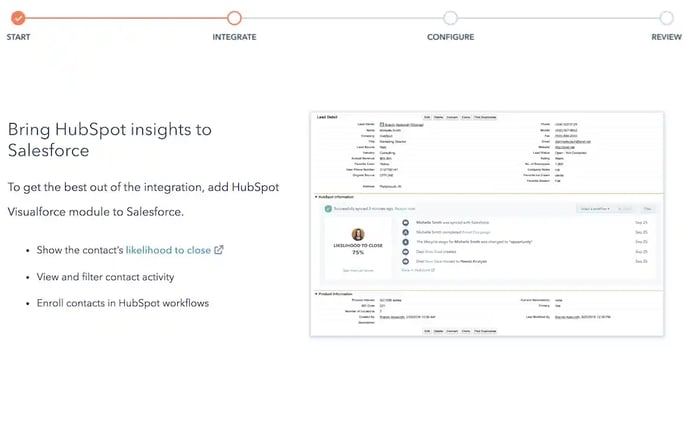
2. Use internal messages to create tasks.
How many times does this happen?
You're messaging a coworker and you come up with a great plan to attack a project. You then have to transfer that plan into a doc, format it, check it for errors, make sure Todd is tagged in the third paragraph, then 11 more steps before you eventually share it with the rest of the team. All this work to rewrite a quick conversation that you had with your coworker 15 minutes ago.
Here's where a software integration like the one between Slack and Trello can come in handy. These integrations turn messages into tasks or "cards" that are easily shared from team member to team member. Teams can collaborate on individual cards or work on them independently while still being able to track the progress of their coworkers.

3. Connect contact data with marketing software.
One of the handiest use cases for software integration is in marketing. It's never been easier to tailor campaigns and messages for your intended audience with the help of tools like HubSpot, MailChimp, and Shopify.
Take the last two, for example. You can integrate MailChimp and Shopify so that customer data flows freely between the software. Now you can send your most loyal customers personalized emails that reflect their purchase history and previous engagements with your brand.
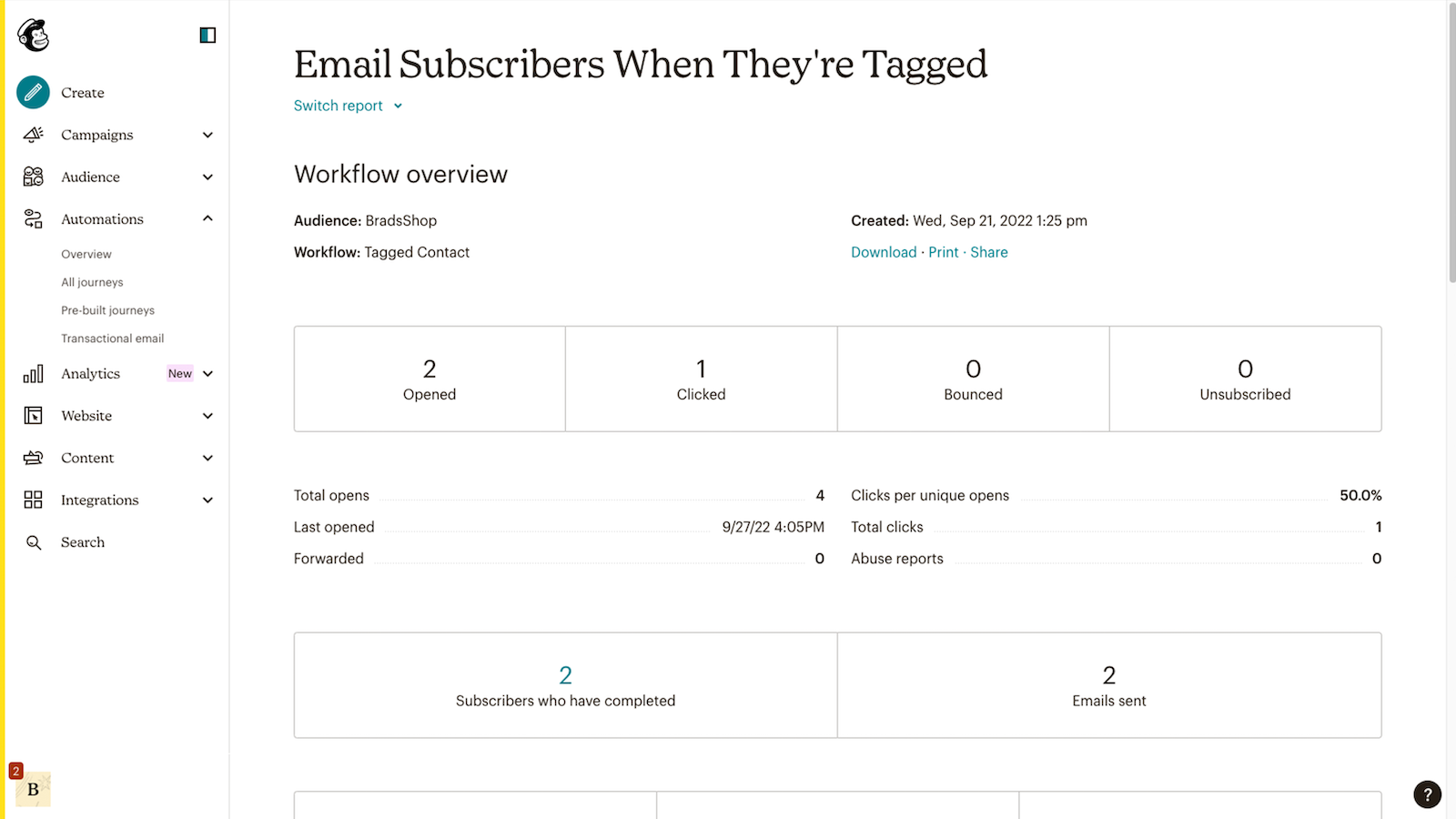
4. Automate repetitive or tedious workflow.
You can automate a lot of repetitive tasks if your data is synced seamlessly between software.
For example, Zapier can trigger actions in Google Sheets whenever certain conditions are met.
Let's say you want to add a new row to your Google Sheet when a contact is created in your CRM. Zapier can automate this so that all of that new contact's information is rewritten on a row in your desired Google Sheet. This can save your team a ton of time from having to manually export data from a database.
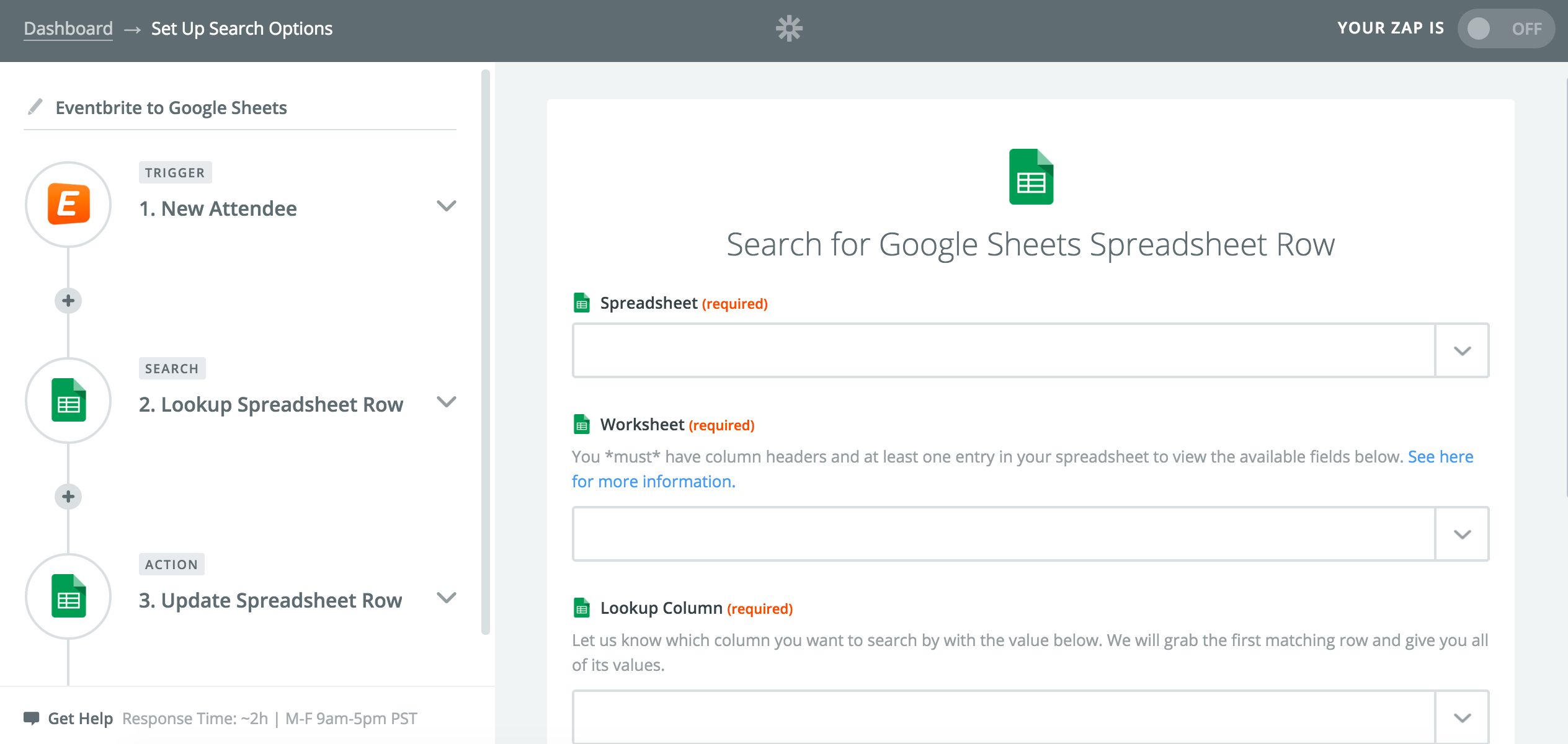
Before we wrap up, let's review some best practices for integration software.
Best Practices When Integration Software
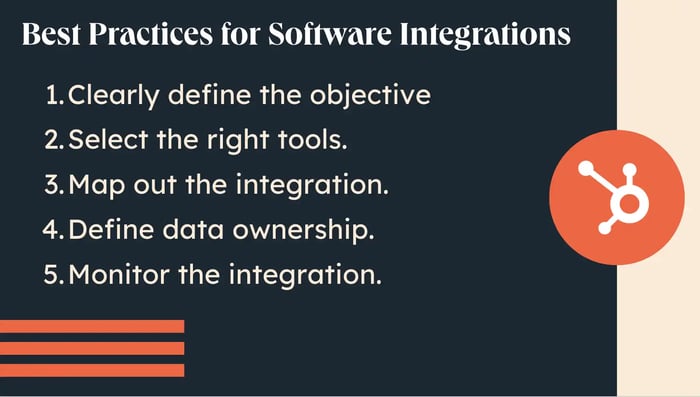
1. Clearly define the objective.
Before you sync anything, you should clearly define your objective. What do you want to achieve with this integration? This will help you stay focused on what matters most and ensure that your integration is aligned with your business strategies.
2. Select the right tools.
Like with any job, having the right tools at your disposal can make all the difference in your success.
Choose integration tools that are scalable, flexible, and future-proof. Look for ones that are easy to use, well-documented, and offer hands-on support.
3. Create a detailed map of the integration.
If you are building your integration in-house, you should write down a detailed plan that outlines integration scenarios, user flows, and data mapping. Rushing into the building process can create roadblocks that are easily avoidable with a little planning. After all, you don't want to put your company's data at risk by setting up an integration that you're not totally sure how it works.
4. Define data ownership.
Data ownership can be a sensitive subject for various stakeholders at your business. Be proactive and specify who is responsible for data security, privacy, and compliance before you set up your integration.
You should also ensure that your integration adheres to best practices for data sharing, protection, and management so that you can safeguard your data properly over time.
5. Monitor the integration.
By continuously monitoring your integration, you can identify and resolve any issues that may arise over time. You should regularly audit your integration to ensure that it is performing as expected and make necessary adjustments to maintain its effectiveness.
Software Integration Overview
Software integration is a very broad term and there are several types of integrations available. Hopefully, we’ve provided enough context above to help you answer the following questions:
1. What type of software will you integrate?It can be either in-house software or a third-party business application (SaaS).
2. Which integration software do you need?If you are using in-house software, you’ll need an ad-hoc solution. You can see if there's an enterprise integration software that suits your needs, but you might need help from a team of engineers.
If you are working with business applications that share their API, you can use native integrations or an iPaaS.
Among iPaaS there are several options you can choose from, but most of them work one-way or two-way syncs, you'll probably need a native integration that supports all the apps you are using.
3. Which part of your data needs integration?You probably don’t need to integrate every single element of your databases - there must be a logic behind it. Never try to mix apples with oranges.
With some preparation ahead, software integration doesn’t have to be a hassle. Make sure you detect your business’ particular needs and the options you have available. Ultimately, integration won’t only bring your applications closer together, but also your team.
Integrations



